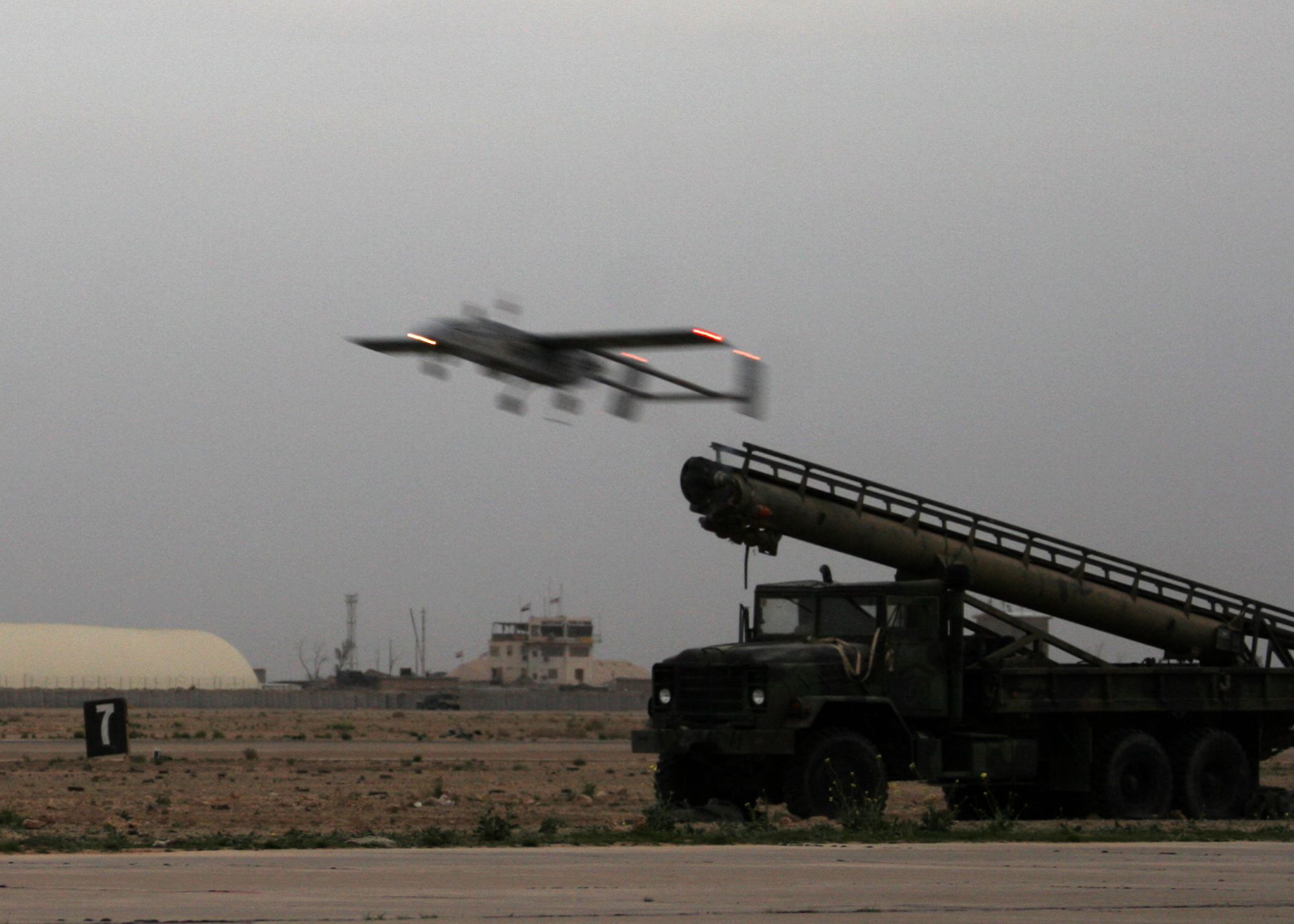

This story was published in partnership with The Center for Public Integrity. This is the fourth in a 10-part series on nuclear risk, military technology, and the future of warfare in light of Russia’s invasion of Ukraine.
On March 4, eight days into its invasion of Ukraine, the Russian Ministry of Defense tweeted a video purporting to show a Russian-made Orion drone conducting an air strike against enemies inside the Donetsk region.
Then there’s drone use by the other side: A Turkish-built drone that has become a sort of mechanical folk hero. In October 2021, Ukraine’s military used Bayraktar drones to attack separatists in the Donetsk region. Since Russia’s invasion, Ukranians have turned Bayraktar drones into a symbol of the war, complete with a song released online March 1.
“[The] Russians are carefully releasing videos of Forpost-R and Orion combat drones as well to try and compete with a Bayraktar narrative,” said Samuel Bendett, an analyst at the Center for Naval Analysis and adjunct senior fellow at the Center for New American Security, referring to Ukraine’s Bayraktar drone use.
Drones, the expansive category of uncrewed flying machines guided remotely, are one of the defining weapons of 21st-century warfare. The origin of drones can be traced back at least as far as experiments with aerial torpedoes in World War I. What sets modern drones apart is their ability to capture footage in real-time of movement on the ground and to then use that video to direct attacks and, increasingly, to use the video as propaganda.
“This is an information war. It’s an information environment. What you see posted on Twitter and TikTok is not the whole battlefield picture. It’s just a small part of it,” Bendett said. Popular perception of the war is shaped by the videos people outside of combat can watch. This means that drones are a useful tool for controlling the perception of performance in war. “And because Russians have ceded the information environment to the Ukrainians, the Ukrainians can run with it,” Bendett added.
Modern drones are used by militaries for intelligence, surveillance, and reconnaissance, or, in general, scouting. When equipped with regular and infrared cameras, these drones allow remote operators to look for people and vehicles in daylight and at night. Militaries can use drones to find the coordinates of military targets, like a tank or a group of soldiers. If the drone is armed, a military can also use it to attack the targets it finds.
As sensitive military information, drone footage is classified by default, making any public release a deliberate choice. Both the U.S. and Israel, which have used military drones for decades, have selectively released video captured by drones. In 2008, the Israel Defense Forces released footage of a drone strike on what it claimed were terror operatives moving missiles in Gaza—one way to contest evidence that the drone strike targeted civilians.
Drone footage can shape public perception of military power and precision. Describing the use of drone footage by both Armenia and Azerbaijan in 2020’s Nagorno-Karabakh war, analysts Michael Kofman and Leonid Nersisyan wrote: “A social media feed composed largely of drone video footage could lead one to believe in the dominance of such systems, even in a conflict where many casualties are still inflicted by armor, artillery and multiple launch rocket systems.”
As Putin’s war in Ukraine continues, it is increasingly likely that Russia’s Ministry of Defense will continue to release drone footage in an attempt to tell similar stories of competence and precision. And while drone footage will continue to be useful to tell the story of the war, the primary use of drones will be fulfilling their original missions, as flying scouts, sometimes armed, that can find targets for other, deadlier weapons.
The Russian military has had years of experience using drones, both in Syria and in support of separatists fighting Ukraine over the Donetsk region. Drones in Syria faced few modern anti-air defenses, so they could operate with little risk of being shot down. Drone tactics developed for open skies are hard to adapt to the more constrained airspace of a large war against a modern military.
As a result, much of the documented evidence of Russian drones in combat comes through images shared on social media of shot down, crashed, or destroyed machines. The images of destroyed drones suggest a broad range of machines used by Russia, even if Russia has been slow to share video from its drone strikes.
These shot-down drones include Forpost-R, an armed scout based on an Israeli design, which can be used for attacks like Ukraine’s Bayraktar. Other Russian drones observed shot down in the war include Orlan-10s, a small scout used as an artillery spotter. Without spotters directing fire, it is harder to use artillery accurately, especially against moving targets.
Beyond the spotter drones, observers have reported wreckage of Kub loitering munitions, which are missiles in the airframe of a drone. These weapons, in a similar fashion to the U.S.-made Switchblade drones delivered to Ukraine, potentially let small units of soldiers attack targets miles away from where they are launched.
Both Russia and Ukraine have already supplemented their use of military drones with hobbyist and commercial drone models. As the supply of drones built for war dwindles with continued fighting, over the course of the war, experts expect an increased military reliance on commercial models, provided those drones are still available for purchase.
“Let’s say Russians exaggerated everything …. In modern combat, they would still need to come up with that capability right away or yesterday, because that’s how wars are fought,” Bendett said. Drones have “become organic to warfare.”
And even if the Russians didn’t have the same drone capability “that they bragged about,” he said, “they will need to acquire drones somewhere and put them out there.”
For other stories in the series, navigate here.